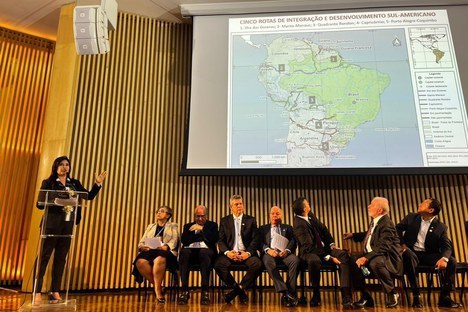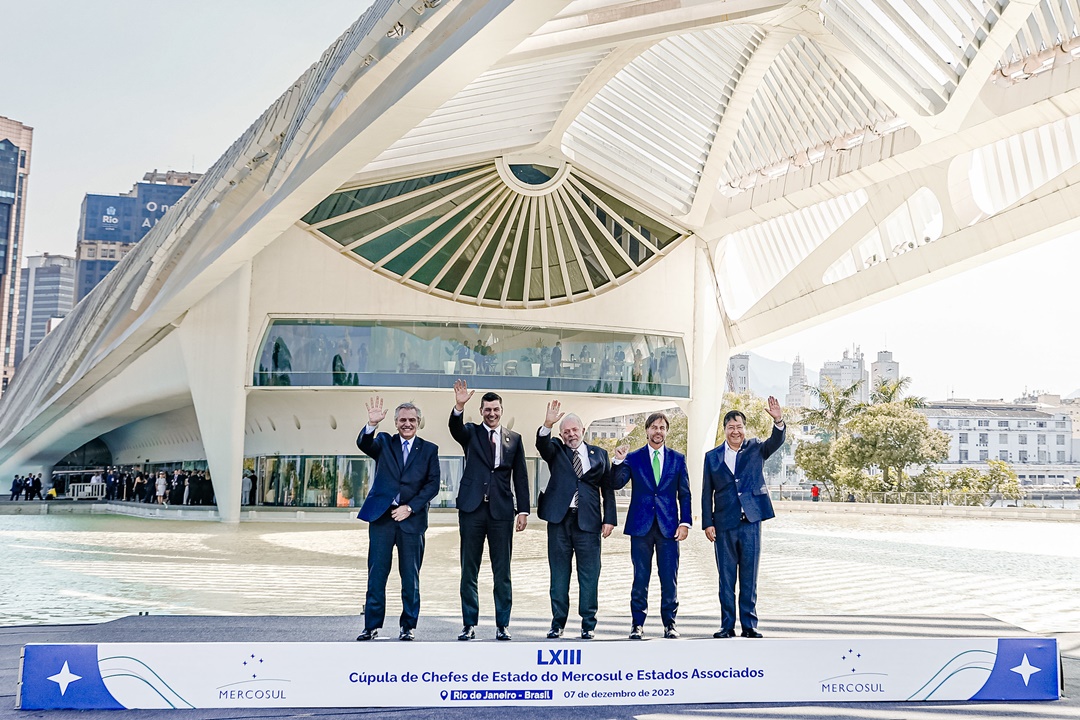Notícias
MERCOSUR
Development banks announce R$ 50 billion for South American infrastructure integration

Minister Simone Tebet detailed the five prioritarian thematic areas of the integration projects - Credit: Publicity
This Thursday, December 7, the Federal Government announced the “Routes for Integration” initiative. The program will benefit from around R$ 50 billion (US$ 10 billion) from development banks to build a network of routes for South American integration and development.
Regional integration must be part of the solutions to face the challenges shared among the region's countries, to build a peaceful world, and to strengthen democracy”
Simone Tebet, Minister for Planning and Budget
The idea is to reduce distances, improve logistics, facilitate connections, and increase productivity. Constructions will include infoways, hydroways, roadways, railways, ports, airports, and electricity transmission lines.
Investments will come from the Brazilian National Bank for Economic and Social Development (BNDES), the Development Bank of Latin America and the Caribbean (CAF), The Inter-American Development Bank (IDB), and the Fonplata Development Bank.
“It is the largest financial fund in the history of Mercosur’s integration”, defined the president of BNDES, Aloizio Mercadante. “Improving infrastructure will allow us to increase the density of regional production chains”, he added.
CONSULTATIONS – The minister for Planning and Budget, Simone Tebet, presented the five routes foreseen in the South American integration plan, defined after five months of consultations with the Brazilian bordering states and in the context of the New PAC construction work. They are: Ilha das Guianas [Guiana Islands], Manta-Manaus, Quadrante Rondon, Capricórnio, Porto Alegre-Coquimbo.
Tebet highlighted that the Brazilian states bordering South American countries are divided from them by a forest, a river, a bridge, or an avenue. “We are brother countries, South American, even though we have different languages, we are one people,” she stated, standing beside presidents Luiz Inácio Lula da Silva, Santiago Peña (Paraguay), and Luis Arce (Bolivia).
Strategic projects for integration infrastructure will be the focus of the joint action, which includes support through the availability of financing lines as well as project structuring.
“The initiative may also promote the financing of integration projects in the social, environmental, and institutional areas. Regional integration must be part of the solutions to face the challenges shared among the region's countries, to build a peaceful world, and to strengthen democracy”, stressed the minister.
DNA – For Sérgio Diaz-Granados, executive president of CAF, regional integration is an integral part of CAF’s DNA. “It was only possible to generate and build this agreement because we agreed on the urgent need to build effective infrastructural conditions to strengthen South American integration,” declared Diaz-Granados.
The IDB president, Ilan Goldfajn, stated that the bank intends to mobilize approximately R$ 15 billion in financial and technical assistance to support South American integration. “We are committed to boosting the region towards the development of its infrastructure,” said Goldfajn.
The president of Fonplata, Luciana Botafogo, stressed that the expansion of regional integration will increase the joint potential of the countries, “generating new commercial and investment opportunities to strengthen national economies”. Fonplata will make up to US$ 600 million (R$ 3 billion) available for the initiative between 2024 and 2026.

MERCOSUR — During the Mercosur Summit, President Lula stated that the countries of the region are stronger together. Among the important points of the Brazilian Presidency, he highlighted the conclusion of the free-commerce agreement with Singapore and Bolivia’s entry to the block as significant achievements. After the leadership meeting, Brazil passed the block’s ‘pro tempore’ Presidency to Paraguay. The Mercosur countries issued a joint statement. In the document, they celebrated the return of the Social Summit, held presentially this week for the first time since 2016. They also reviewed the work done during the second semester of 2023, on issues such as commerce, infrastructure, and energy.